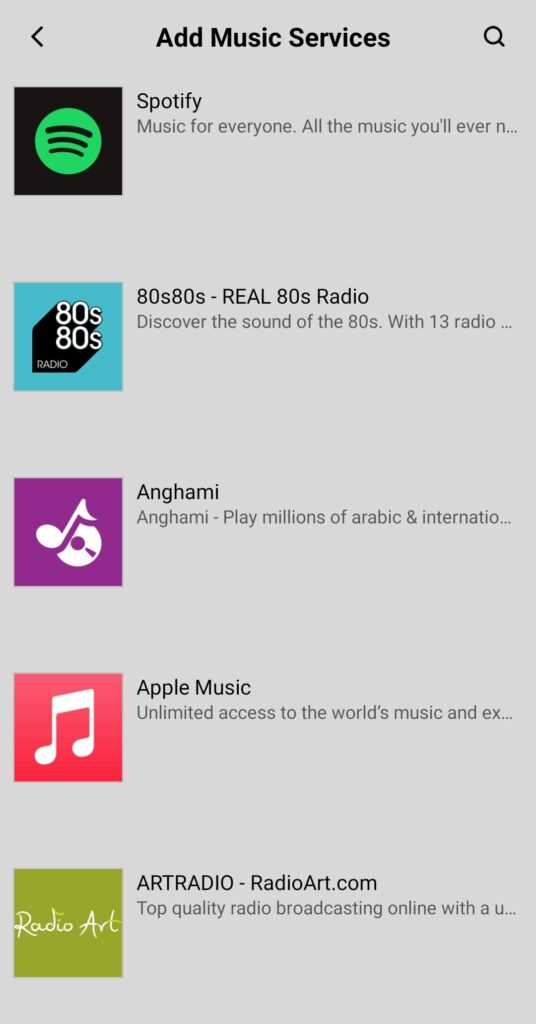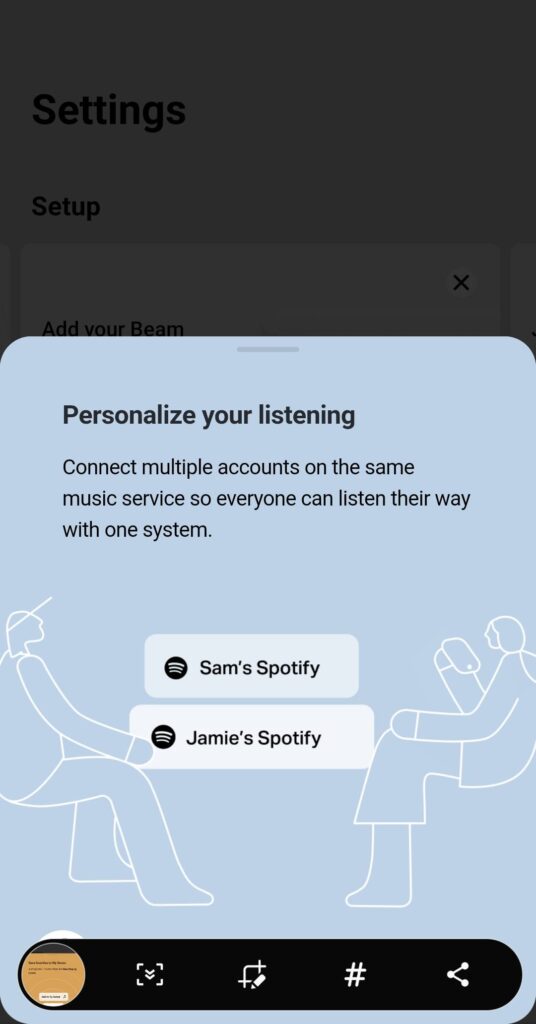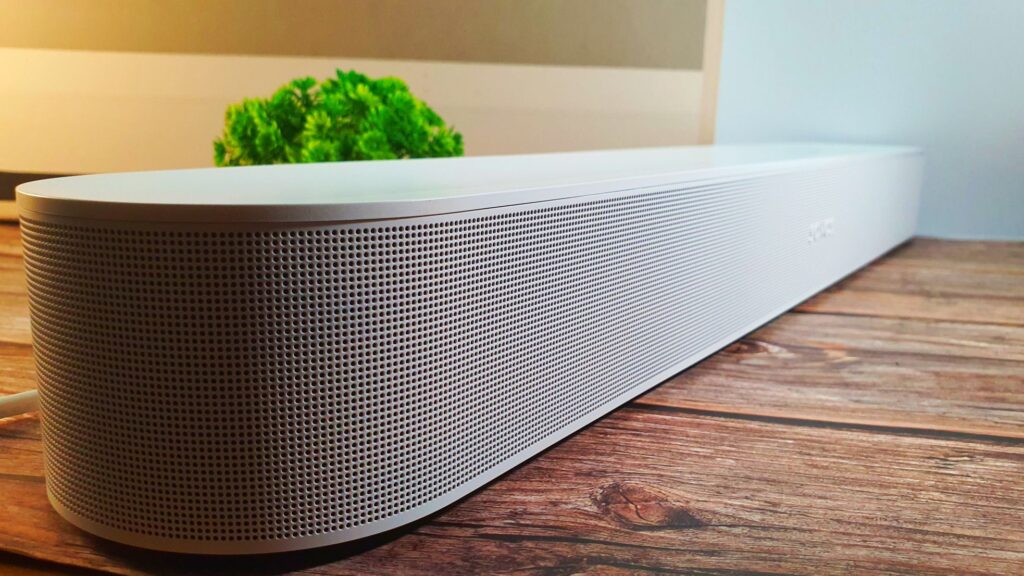
Sonos Beam Gen 2 Review – Raising the Bar for Soundbars
The original Sonos Beam soundbar that debuted in 2018 set a literal high bar as it combined exceptional sound quality in a compact form factor when it debuted in Malaysia. Now, 4 years later, Sonos has managed to craft a successor with a host of enhancements that include virtual Dolby Atmos support, but is it worth the price of entry? Check our Sonos Beam Gen 2 review where we put it to the test!
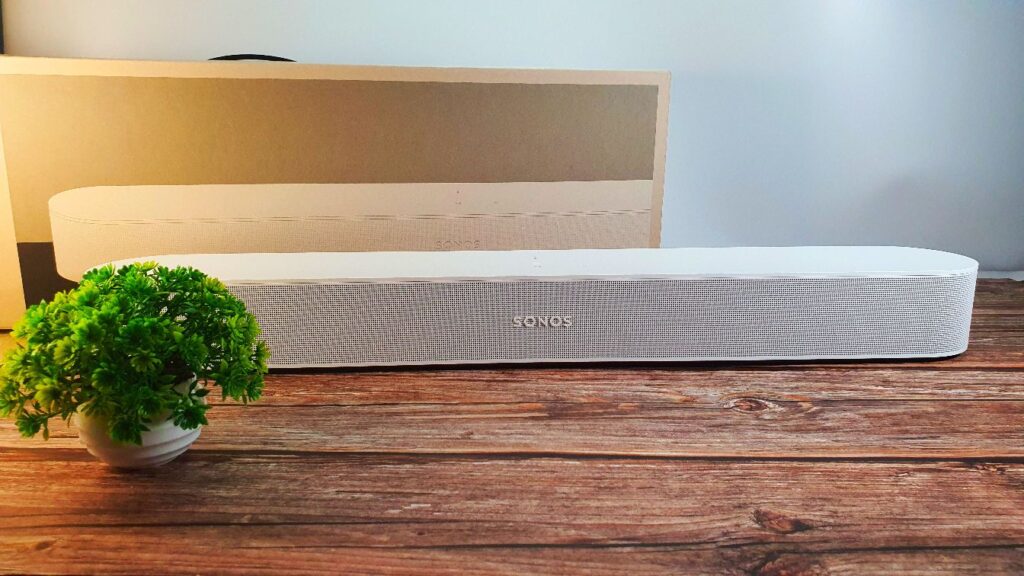
What is the Sonos Beam Gen 2 soundbar
Table of Contents
Since their founding, Sonos has earned a sterling reputation for themselves as the de facto brand for wireless speakers and we’ve had a fantastic experience testing their line-up over the years from their Playbar, the unique Playbase, the powerful Arc, the ultra compact Roam and the first generation Beam.
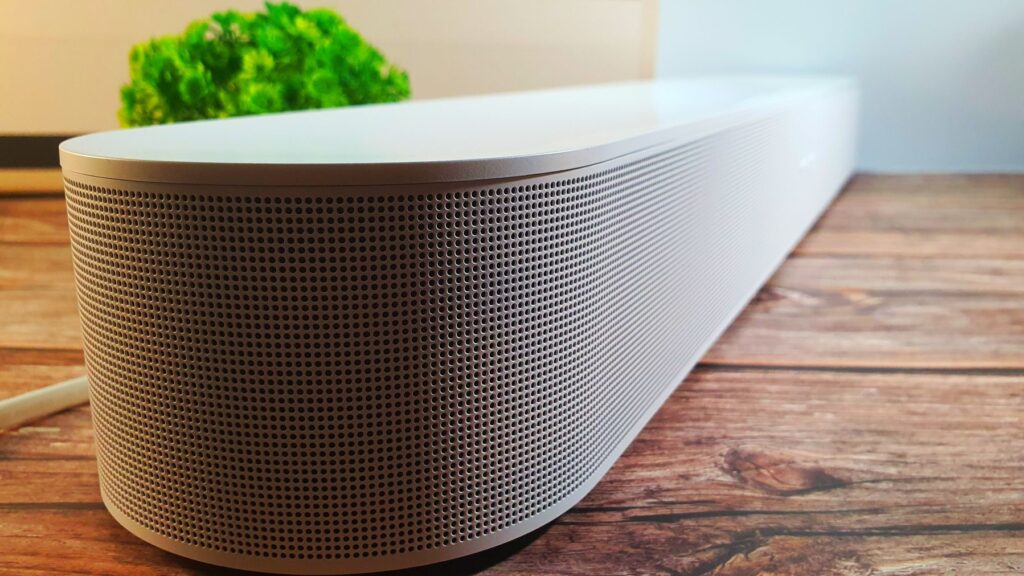
Intended as the replacement for the Beam Gen 1, the new Sonos Beam Gen 2 soundbar is one of their most compact soundbars available with a compact form factor that allows it to conveniently perch under most TVs and monitors.
While it works perfectly fine on its own, it is capable of integrating with the rest of the Sonos speaker ecosystem and is capable of pairing up with an additional Sonos Sub (RM4,299) for beefier bass or a pair of One SL speakers (RM2,198) to add in left/right channels to create a more robust surround sound system.
What’s the difference between the Sonos Beam Gen 2 vs Sonos Beam Gen 1
For more discerning collectors this time around, the Sonos Beam Gen 2 ships with colour matched power cables for its two colourways – black and white – so that you’ll get white cables with a white Beam Gen 2 and black cables with a black one to ensure a more coordinated look with your decor.
Out of the box, our Sonos Beam Gen 2 review unit shipped with the aforementioned colour-matched power cable, a HDMI cable as well as an optical audio adapter which is the same array of accessories that come with the original Beam Gen 1.

In terms of design, the Sonos Beam Gen 2 is very similar to the original Sonos Beam Gen 1 in terms of form factor, dimensions and overall design though closer inspection reveals that the Gen 2 uses a primarily polycarbonate grille with hundreds of drilled holes around the front and sides whereas the original Gen 1 opted for a fabric housing over its speaker array. There’s no differences in acoustics but the polycarbonate grille is a lot easier to clean than the earlier fabric housing which makes it more practical over the long term.
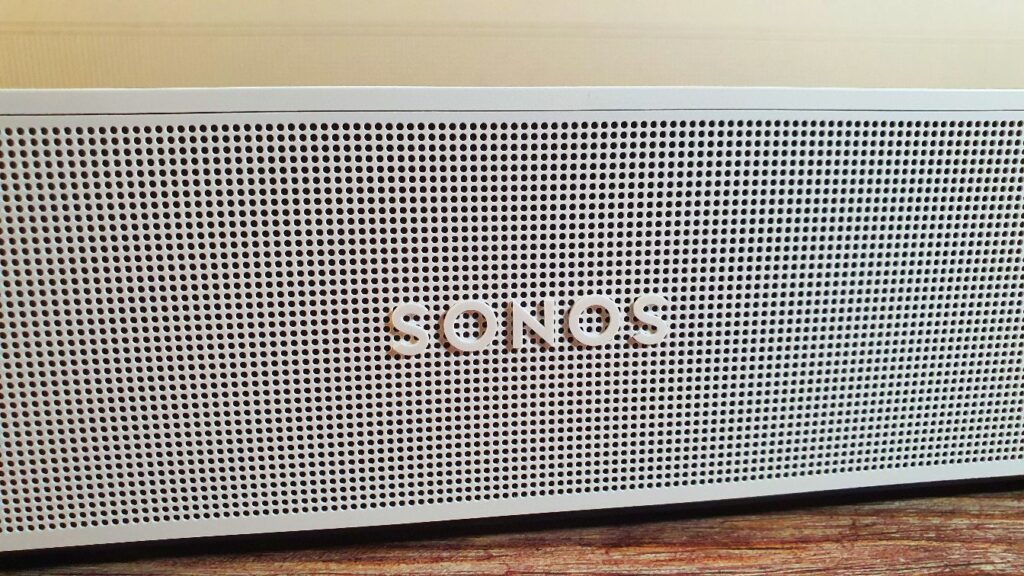
The overall speaker setup for the Sonos Beam Gen 2 is similar with three passive radiators, a center tweeter and four midwoofers as the original Beam though Sonos adds in upgraded eARC (Enhanced Audio Return Channel) connectivity which, on paper, offers better bandwidth ot the tune of 32 audio channels and uncompressed 24 bit/192kHz 38Mbps data streams, allowing it to handle hi-res audio codecs and commensurately enhanced audio quality.
Another notable upgrade with the Gen 2 is the addition of Dolby Atmos support and a processor that’s 40% more powerful than its predecessor. This added processing bandwidth enables Sonos to digitally stimulate height and surround channels using psychoacoustic head-related transfer function (HRTF) techniques to give an impression of height rather than the traditional solution of having to physically add upwards-firing speakers to create a virtual Dolby Atmos surround sound experience.
The controls are also similar with an identical set of touch controls up top and a similar set of rear ports that include one for power, an Ethernet port and a HDMI port with ARC/eARC support that you’ll need to hook up to a TV in order to get virtual Dolby Atmos audio. The Sonos Beam Gen 2 also retains virtual assistant support so you can get your choice of Google Assistant or Alexa on board though the latter requires quite a bit of gerrymandering to get working.
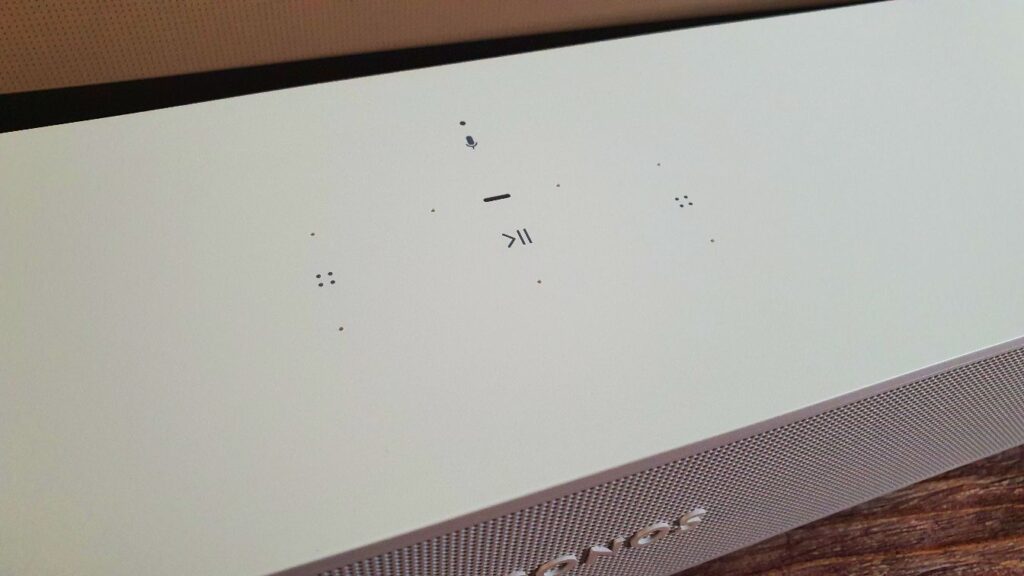
The Sonos Beam Gen 2 is also a wee bit pricier at RM2,699 versus its predecessor’s RM2,399 launch price though it’s understandable seeing as there’s a 4 year gap, inflation and a global chip shortage being factored in.
Sonos Beam Gen 2 Review – Setup and Performance
Getting our Sonos Beam Gen 2 review sample up and running is as easy as it gets in keeping with Sonos’s ethos of keeping things simple. Once the soundbar has been removed from its protective packaging and then hooked up to the mains, you simply have to download the Sonos S2 app on your Android or iPhone to then connect it to your home WiFi network or any existing Sonos speaker systems you have as well as selecting your virtual assistant of choice though Alexa isn’t officially offered in Malaysia just yet.
The S2 App also lets you take advantage of their TruePlay feature when setting up the speaker. For the uninitiated, TruePlay uses the microphones in an iPhone to customise the Sonos Beam Gen 2’s acoustics to your room’s exact dimensions which makes a marked difference in performance.
As you’d surmise, TruePlay only works with iPhones and not with Android phones on account of the sheer number of Android phones available in the market and the difficulty in accommodating them all in the app. It’s well worth the trouble for non iPhone owners to beg, borrow or nick one in order to optimise the acoustics of the Sonos Beam Gen 2.
Once you’ve got all the formalities all sorted out, you’re able to play music off your Spotify or other favourite music streaming account, run tracks off your phone and have it play audio off a connected TV.
While it won’t outgun its larger sibling the Arc as a virtual Dolby Atmos solution isn’t going to be as vivid as a physical upward-firing speaker setup, the Sonos Beam Gen 2 gives an incredibly good accounting of itself, notwithstanding its size and is easily capable of outperforming non-Dolby Atmos equipped soundbars.
When tested across a variety of genres and music on its own as a standalone device after getting it tweaked with TruePlay, our Sonos Beam Gen 2 review sample handled everything thrown at it like a champ.
The soundbar was able to tackle movies with deft aplomb, handling low frequencies with a deep and vivid rumble and more complicated, layered tracks like the beach landing scene in Saving Private Ryan though the addition of a Sonos Sub will offer much better bass.
Granted, it’s virtual but the acoustics sounded fantastic with a modicum of height and good left/right staging. Subtler tracks and music were equally well handled with beautiful detail and balance. For what you pay for, this is an immensely capable soundbar.

Should you buy the Sonos Beam Gen 2?
For those who have yet to jump onto the Sonos bandwagon but are looking for a modest standalone living room solution or who have a fairly compact living space but require something ‘big’ enough to fill it with sound, the Sonos Beam Gen 2 delivers in spades with loud, detailed audio that belies its modest dimensions.

Add in the fact that it’s wireless and incredibly easy to get up and running and you have a fantastic item to add to your holiday wishlist. If you have deeper pockets, you can go straight up and opt for the more premium Sonos Arc.
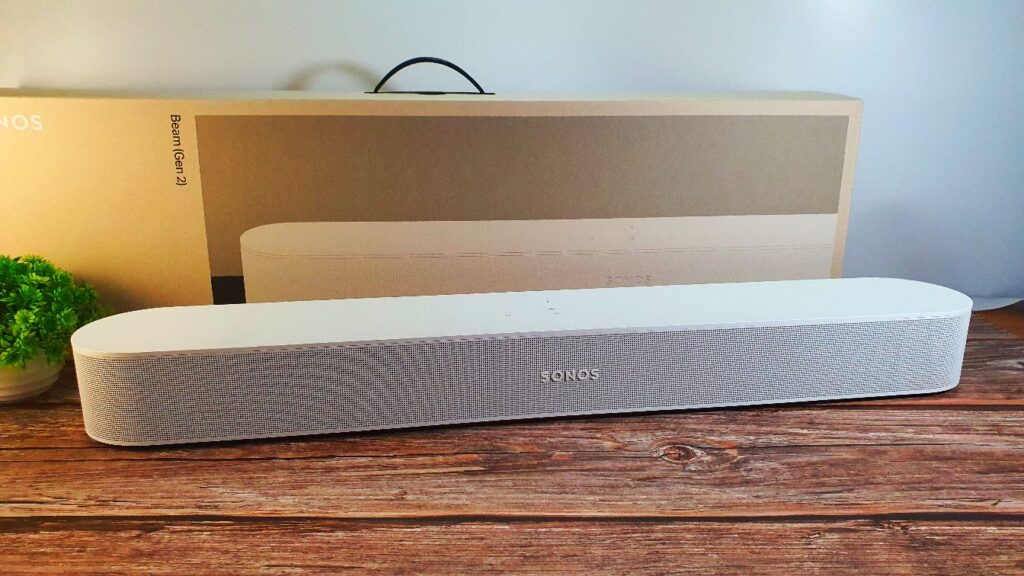
Specifications
Price RM2,699
Speakers 5 Class 5 digital amplifiers (1 centre tweeter, 4 elliptical midwoofers), 3 passive radiators
Connectivity WiFi 802.11b/g/n/ac, HDMI eARC, Ethernet port, Apple AirPlay 2, Google Assistant and Alexa support
Size/Weight 651 x 100 x 69mm / 2.8kg
Sonos Beam Gen 2 Review sample courtesy of TCAcoustic Asia. Available online at www.trysonos.my and at https://my.tcacoustic.asia/products/sonos-beam-gen2
Sonos Beam Gen 2
-
Performance
-
Value
-
Connectivity
-
Design
Sonos Beam Gen 2
The Sonos Beam Gen 2 soundbar is an outstanding successor to the original Beam, offering improved audio quality as well as virtual Dolby Atmos support while retaining a similar form factor. If you’re looking for a compact sound bar that offers superb sound quality that’s also easy to set up, the Sonos Beam Gen 2 should be at the top of your wish list.
Pros
Excellent detail and volume
Delightful sound staging
Features virtual Dolby Atmos support
Easy setup
Features HDMI eARC support
Cons
More HDMI ports would be welcome
Trueplay sound setup still needs an iOS device to work

